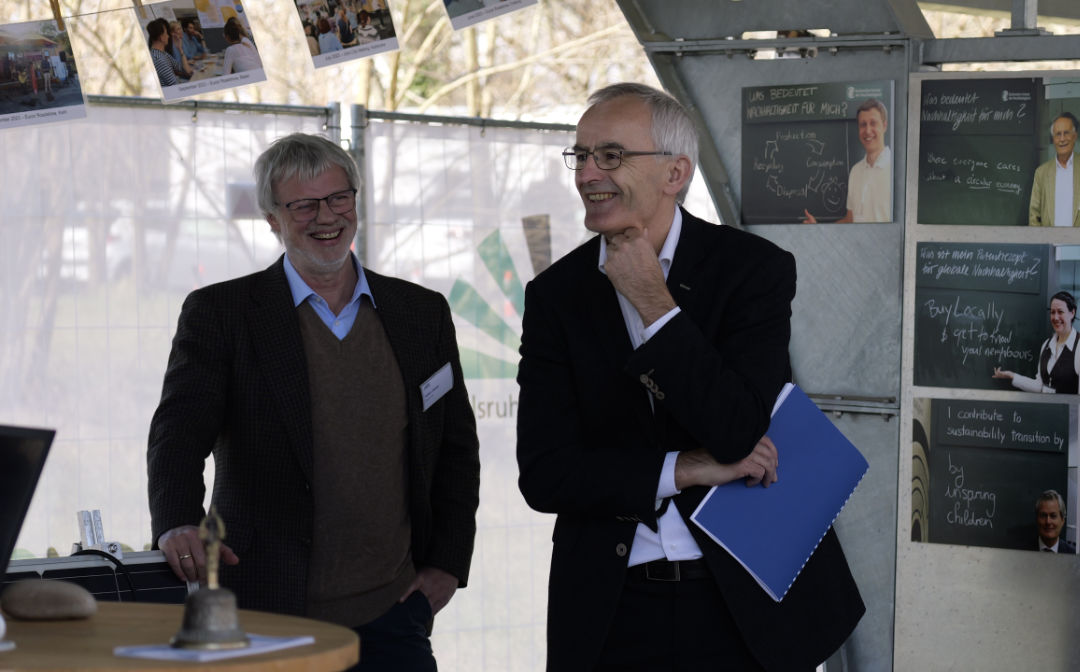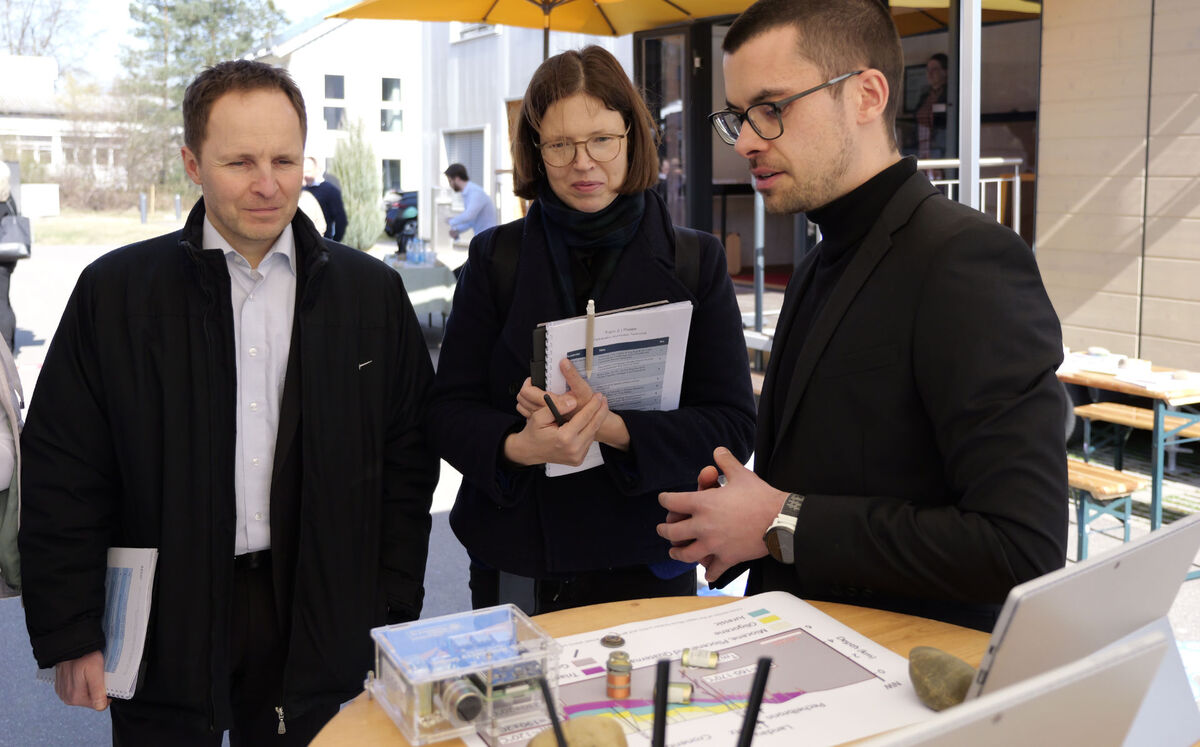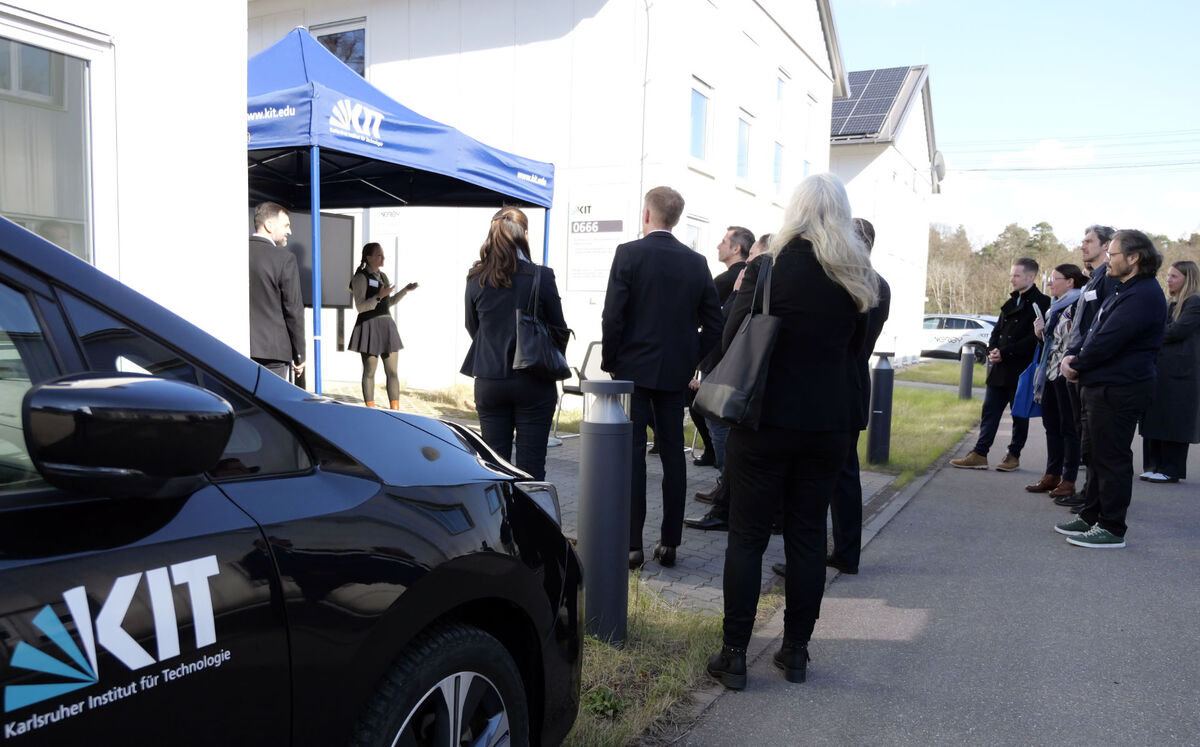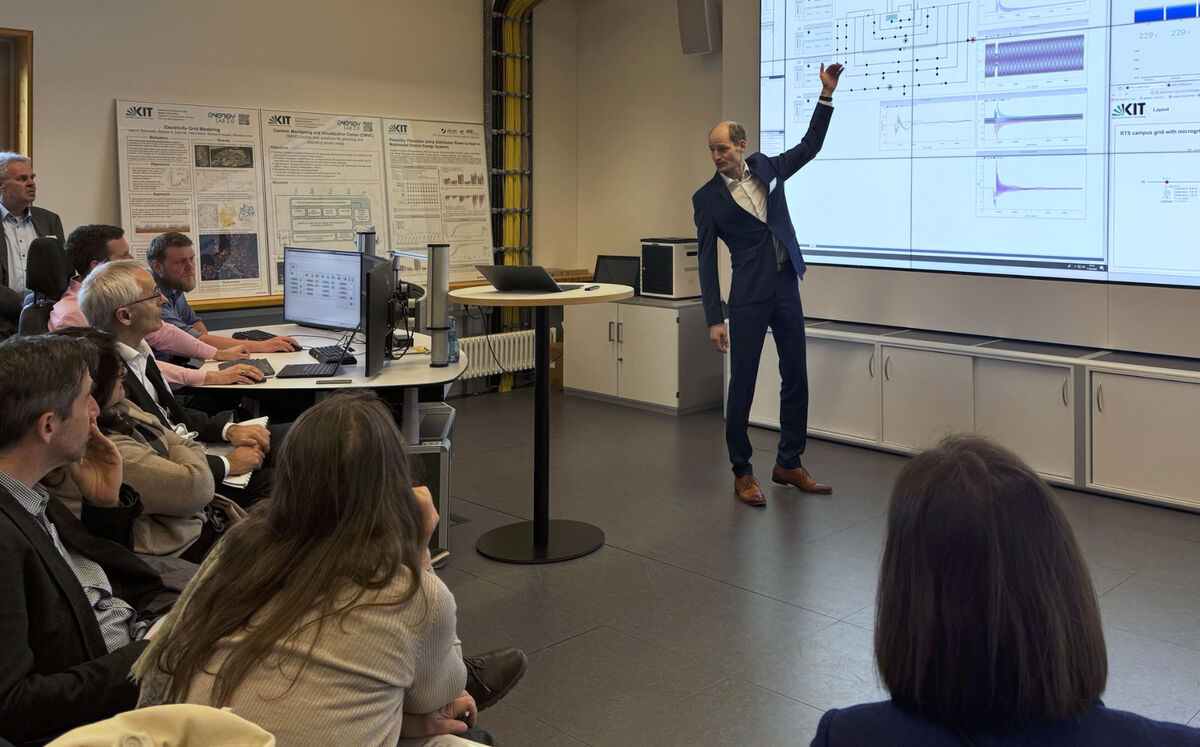ESD Program: Insights into the Review
The Helmholtz program "Energy System Design" (ESD) at the Karlsruhe Institute of Technology (KIT) underwent a comprehensive evaluation in March. For four days, the scientific research was evaluated during the fourth phase of program-oriented funding. ESD uses and expands the infrastructure of the Energy Lab and cooperates synergistically with the "Materials and Technologies for the Energy Transition" (MTET) program of the Helmholtz Association.
The international panel of experts was made up of leading scientists from renowned institutions. They visited various stations of the Energy Lab on the KIT North Campus and gained an in-depth insight into the innovative approaches and research activities during laboratory tours, poster presentations and lectures. Their recommendations form the basis both for the strategic review of ESD in the coming year and for the future strategy of Helmholtz Energy.
As part of the first focus area, energy system transformation, ESD develops new energy systems that can be effectively restructured, always considering socially acceptable aspects. Exemplary forms of exchange between science and society were presented around the flexibly usable MobiLab, a mobile participation laboratory in the form of a tiny house: Participatory research, citizen science and exchanges with citizens on transdisciplinary and transformative research in local marketplaces. The research serves as a basis for discussions and considerations by political decision-makers.
The second focus area, digitalization and system technology, centers on the research and development of new technologies to make our energy system more efficient and reliable. The Living Lab Energy Campus (LLEC) laboratory is an example of the practical application of this research. It compares and evaluates living and working conditions in three experimental buildings with identical building shells but different controllable heating and energy systems, including one that is operated entirely with direct current. The experiments conducted here lead to methods and tools for better automated planning, control and distribution of energy – and thus direct energy savings.
The system integration and grid operation focus area also deals with the integration of different energy sources and technologies into a functioning and efficient energy system. The aim is to ensure a stable and reliable system. Methods for flexibility in distribution grids and for large-scale grid simulations were presented in the Control, Monitoring and Visualization Center (CMVC) and Power Hardware In the Loop (PHIL) – both part ot the Smart Energy System Simulation and Control Center (SEnSSiCC). Finally, the High Power Grid Lab (HPGL) provided insights into the analysis and testing of high-performance grid components and systems.
The results of this review will be decisive for the future direction of the program and will help to further advance the research and development of sustainable and resilient energy systems. Overall, the review provided important impetus to drive research forward and find innovative solutions for a sustainable energy system.





